Chennai Teacher Makes Homemade Fertilizers From Kitchen Waste, Grows Over 400 Plants
S Sathyanarayanan is a French teacher in Chennai's Anna Gem Science Park School, and took up terrace gardening as a hobby in 2015. Today, he grows over 400 plants on his terrace and balcony, and cares for them with a wide variety of homemade fertilizers using waste.
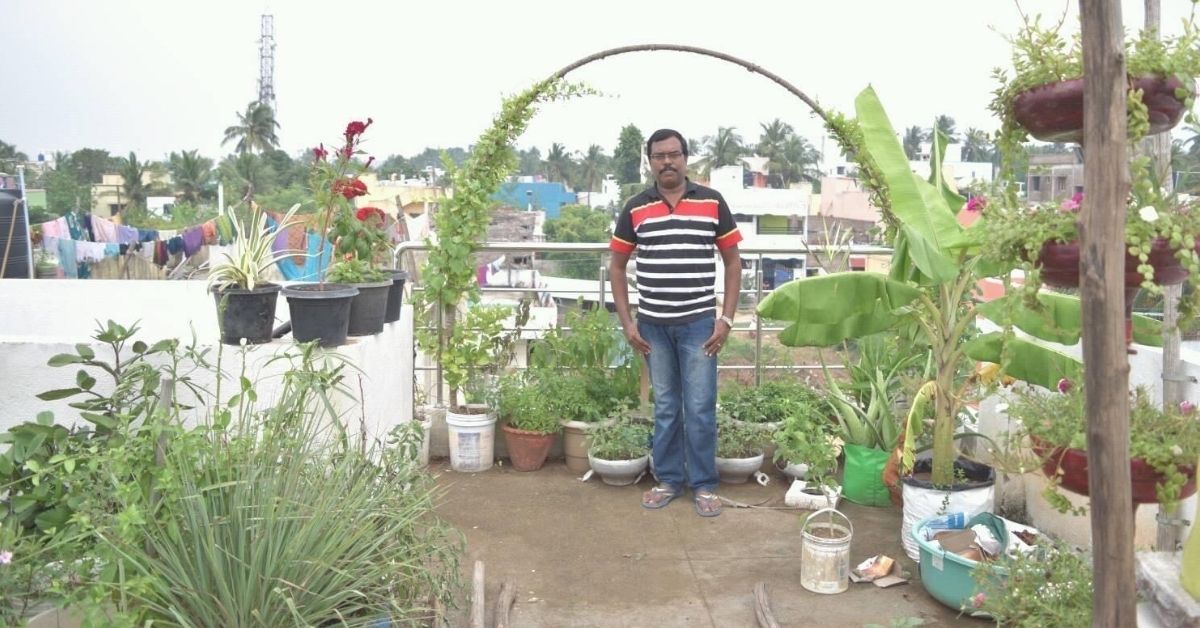
Amidst the hustle and bustle in one of Chennai’s busiest streets, Chrompet, 51-year-old S Sathyanarayanan has created a green paradise on his 1,200 sq ft terrace. He grows 400 plants including ornamental flowers such as moss roses, medicinal plants like moringa, fruits like figs, and vegetables like lady’s finger, potatoes and more.
However, what’s unique about Sathya’s garden is that he prepares a variety of liquid fertilizers using kitchen ingredients to nourish his plants. Further, he also prepares a mix of water, jaggery, and an organic Waste Decomposer (WDC) solution in a 250-litre drum. This is fed to all plants regularly, which ensures healthy and pest-free growth.
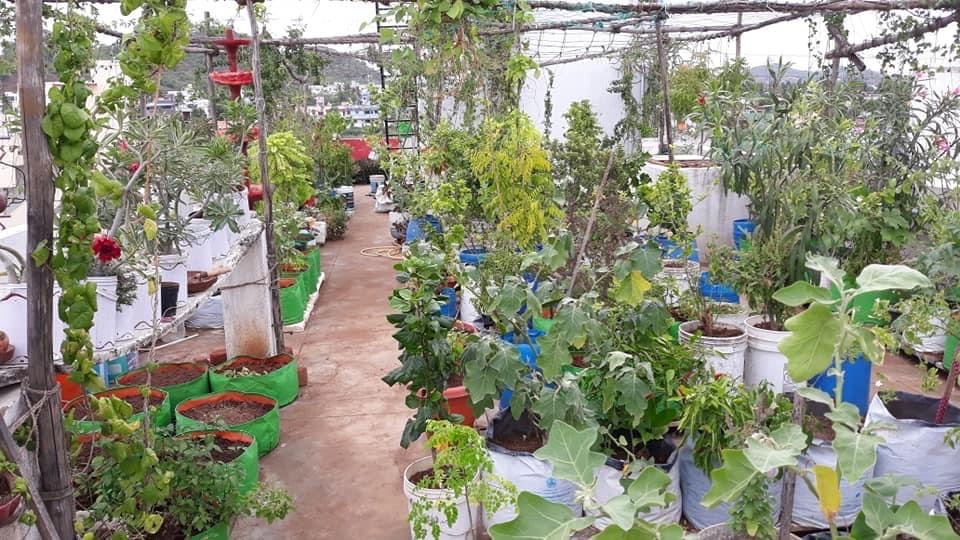
“I started terrace gardening in 2015 after my family and I moved into our newly constructed home here. Earlier, we were living on the ground floor of a rented home and I could not grow many plants, as the availability of space was an issue. I started my gardening journey with 50 pots of money plants, tulsi, tomatoes and others. Today, my garden has over 400 pots, which grow ornamental flowers, fruits, and vegetables,” says Sathya, adding that regular visitors to his garden include buzzing honey bees and chirping love birds.
Understanding terrace gardening
Five years ago, Sathya took up terrace gardening as a hobby to escape his busy life as a French teacher in Chennai’s Anna Gem Science Park school. He purchased 50 terracotta pots, filled them with organic potting mix, and planted saplings for various ornamental flowers.
Apart from that, he watched videos on the internet on how to prepare seeds from kitchen ingredients to grow vegetables including tomatoes, capsicum and chillies.
“I placed some plants on the balcony, and the others on the terrace. As months passed, I purchased more pots, and my family warned me about spending too much money and adding extra load on the building,” says Sathya.
To learn about terrace gardening and to clarify the doubts he had, Sathya enrolled himself in a one-day workshop at the Tamil Nadu Horticulture Department.
“Several important topics were covered, from making light-weight potting mixes to harvesting produce. However, I could not learn everything in one day. So I watched YouTube videos, spoke to experienced gardeners on Facebook gardening groups, and read blogs to understand terrace gardening concepts,” says Sathya.
He prepared a lightweight organic potting mix using cocopeat, cow dung, and powdered kitchen waste. He added some red soil to add a little weight, as the city is prone to floods and cyclones.
Within a few years, Sathya was growing vegetables including basil, curry leaves, and brinjal, as well as fruits such as pomegranate, strawberries, mulberries and guava. To add to the aesthetic of his terrace garden, he created a mini pond using a plastic bucket to grow pond lilies.
Additional nutrition for plants
As Sathya’s garden began to expand, he continued to learn through experienced gardeners and the internet. Over time, he experimented with more varieties of plants and even succeeded in growing native varieties of spinach such as ponnanganni keerai, arai keerai, and mudakathan keerai, to name a few.
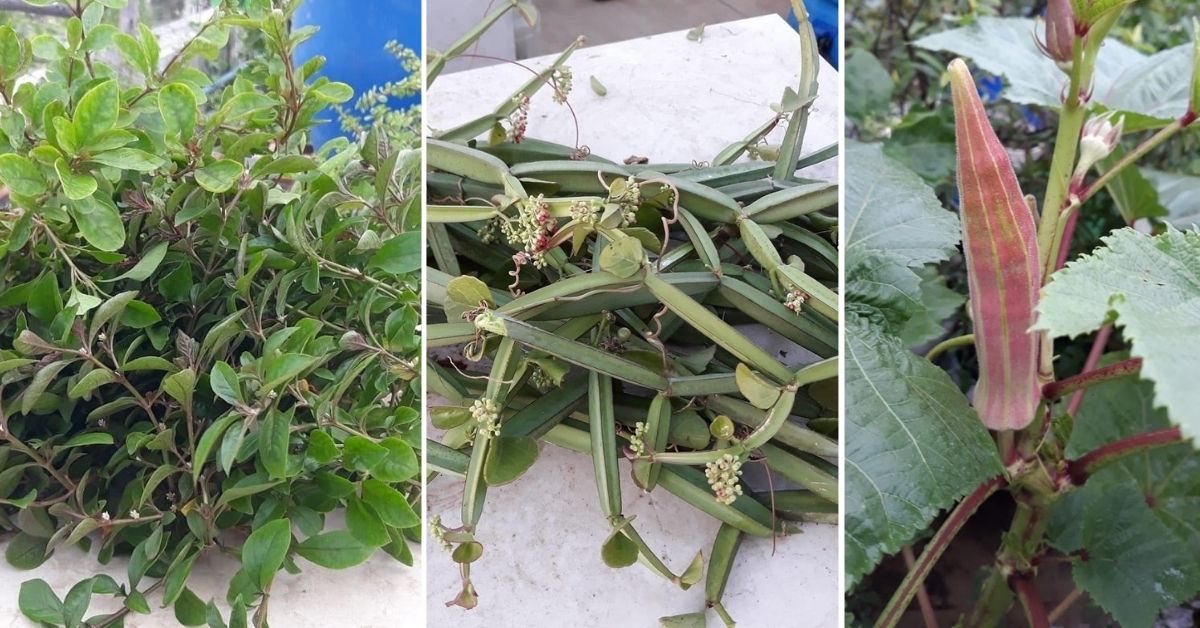
While he was browsing through one of the Facebook groups, he noticed a post that explained the importance of providing additional nourishment to plants, especially during the summer months.
Owing to Chennai’s scorching summer heat, Sathya immediately got to work to protect his plants.
He started by collecting the water used to wash rice and pulses, as it is rich in protein. Sathya placed a bucket in the kitchen and asked his wife not to discard the water in the sink. He also placed a separate bin to collect vegetable peels, and one to collect eggshells.
“The dried and powdered shells are used as a source of calcium for plants. Tomato plants which are prone to such deficiencies benefit from this powder,” says Sathya.
On his dining table, beside the fruit basket, Sathya placed two jars. He requested his wife and two children to dump banana peels and watermelon rinds into them so he could make a fertilizer.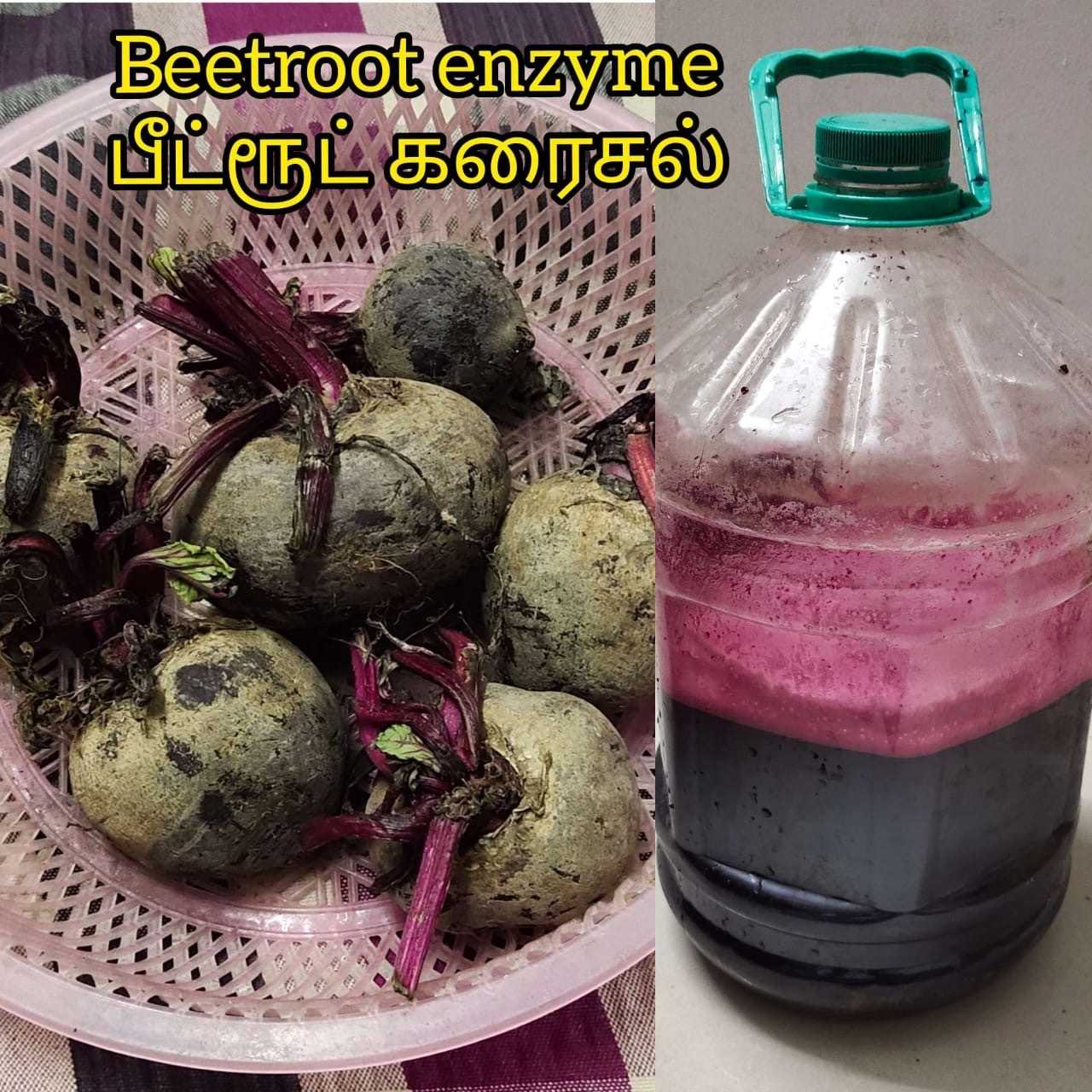
“The peels and kitchen waste are allowed to ferment in water for one week, blended in a mixer and fed to/sprayed on the plants regularly,” says Sathya.
Preparing the liquid fertilizer
Though Sathya was making different types of fertilizers from kitchen waste, he wanted to find one source of nourishment for all his plants. After doing some research online, and speaking to experienced gardeners, he decided to prepare a fertilizer using water, jaggery and a WDC solution.
WDC is an organic solution innovated by the National Centre for Organic Farming (NCOF),and is used for accelerating the composting of organic waste.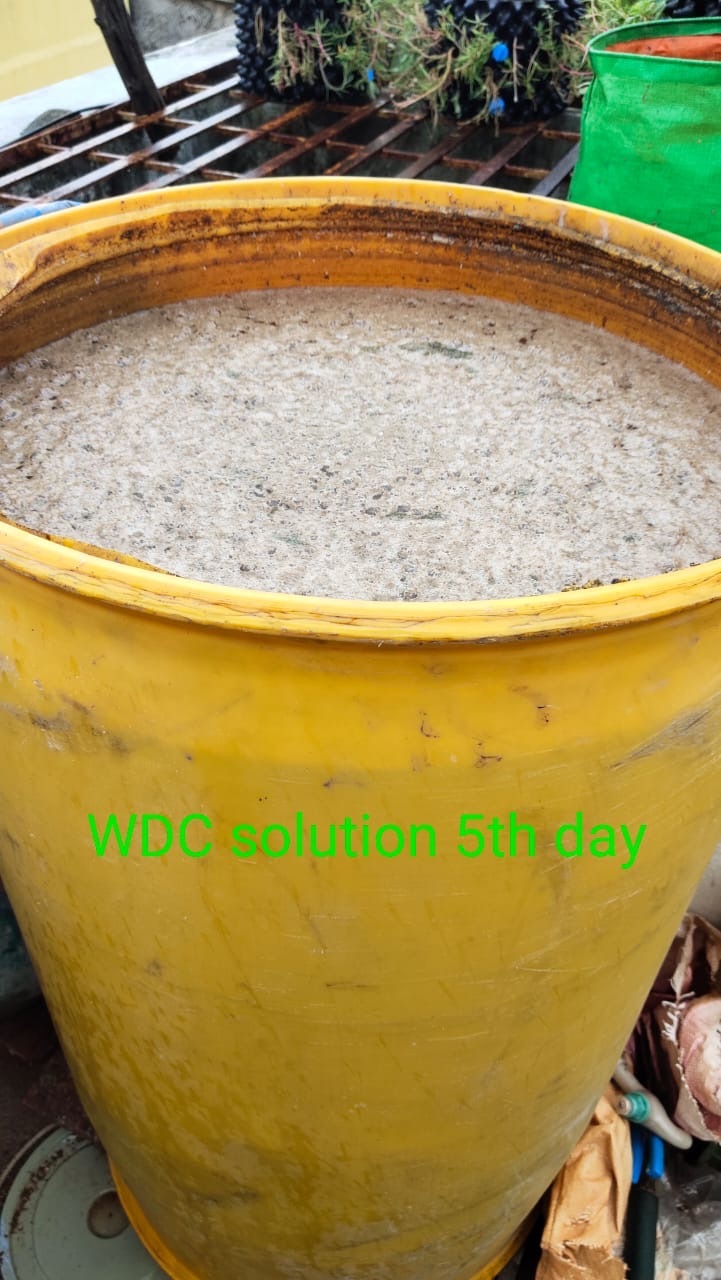
“I prepare the solution by mixing 200 litres of water, 2 kilograms of jaggery, and one bottle of WDC solution in a 250-litre drum. Then, I mix it well with a wooden stick and cover it with a cloth to allow air circulation. It ferments within a few days and emits a fruity odour. One cup of the solution is further diluted with water before being served to the plants,” says Sathya, adding that he prepares this twice a month. To ward off pests, he adds neem oil to the mix.
Sometimes, he even prepares the same kind of fertilizer but adds cow dung to ferment the waste instead of WDC. Though this process is slower, it is equally efficient, says Sathya.
“Nowadays, along with water, I add homemade enzymes to the pots as additional nutrition. For some plants, I add a jaggery solution mixed with water regularly. To date, none of my plants have wilted due to dehydration, nor have they caught diseases,” he adds.
Converting terraces to gardens
By 2018, Sathya had understood his garden well and all his plants were flourishing. He says, he not only provided them with nutrition, but also love. While watering his plants, he speaks to them with kind works, which allows them to grow faster and healthier.
On seeing Sathya’s lush garden, many of his friends approached him to learn more about terrace gardening. Soon, he even started conducting summer workshops for batches of up to 20 people.
“Last year, I conducted a few virtual workshops that had at least 60-80 people who participated. The participants included both men and women. Some were homemakers who wished to start growing organic vegetables, while others were working professionals who wanted to take up gardening as a hobby,” says Sathya.
Today, both his terrace garden as well as balcony have over 200 pots each. Sathya says that along with store-bought containers, he even recycled jute baskets and plastic bottles at home to make hanging pots. He grows 100 types of vegetables including sweet potatoes, white-brinjal, groundnuts, and fruits such as bananas, figs, guavas, pomegranates, strawberries, mulberries, and over 100 varieties of ornamental plants.
If you wish to know more about Sathya’s terrace or workshops, visit his YouTube channel or Facebook page.
This story made me
- 97
- 121
- 89
- 167
Tell Us More
We bring stories straight from the heart of India, to inspire millions and create a wave of impact. Our positive movement is growing bigger everyday, and we would love for you to join it.
Please contribute whatever you can, every little penny helps our team in bringing you more stories that support dreams and spread hope.



















